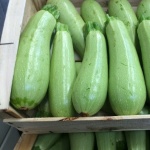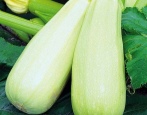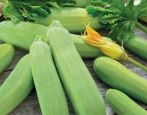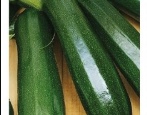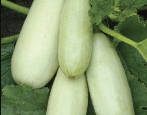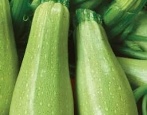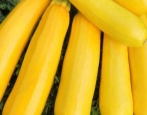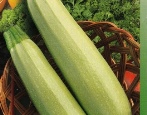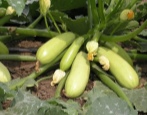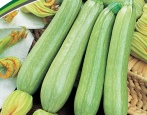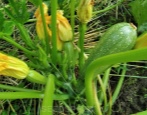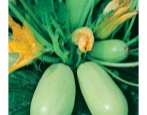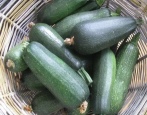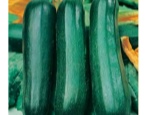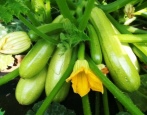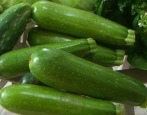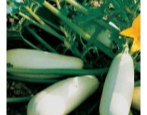
- Authors: Jolanda Kouters
- Name synonyms: Salvador
- Year of approval: 2009
- Ripening terms: early maturing
- The period from germination to harvest: 45-55 days
- Description of the plant: compact
- Leaves: small to medium-sized, green with medium mottling, strongly dissected
- Fruit shape: in technical ripeness cylindrical
- Fruit color: dark green
- Color of the pulp: yellow
Zucchini bred abroad are in great demand among Russian gardeners. The variety Salvador, developed by Dutch scientists, has very good characteristics. This hybrid belongs to the zucchini variety.
Description of the variety
After being included in Rosreestr in 2009, the hybrid variety Salvador gained considerable popularity. Grown in indoor and outdoor types of ground, this zucchini gives excellent yields of presentation. The disease resistance of the variety is high, so usually summer residents do not have problems with its cultivation. However, the care for El Salvador requires the utmost.
Characteristics of the appearance of plants and fruits
Salvador is a bush type of squash. The plant is compact, branching is weak, but foliage is good. Leaflets are small or medium, with strong dissection. They are painted green, have spots of different colors and sizes on the surface. During flowering, female flowers are usually formed.
One bush can form up to 30 even fruits. Already at the time of technical ripeness, zucchini acquire the shape of a cylinder. The length is usually 20-22 centimeters, but if the vegetable outgrows, it can exceed 30. The standard weight is 400-900 grams. The peel of the fruit is dark green, from a distance it even seems black. The surface is characterized by slight ribbing. The seed of El Salvador has a light cream color. Seeds are average in parameters, grow in the shape of an ellipse.
Purpose and taste
The consistency of the flesh in zucchini varieties of medium juiciness. The pulp is distinguished by a bright yellow color, dense in structure. The taste is quite subtle, according to reviews, it is excellent. Salvador zucchini can be steamed, baked, grilled and pan, added to caviar and salads. Many housewives let them be preserved.
Ripening terms
El Salvador is distinguished by its early maturity. The first zucchini can be tried 45-55 days after planting. Another advantage of the variety is long-term fruiting. El Salvador produces new fruits within 2 or 2.5 months.
Yield
The declared average yield of a vegetable marrow is 372-591 centners per hectare of land. Maximum performance is achieved only under optimal weather conditions and enhanced agricultural technology. Accordingly, 1 sq. m shows the result of 4-6 kilograms.
Growing regions
Officially, El Salvador is zoned for the North Caucasus region. However, in fact, the plant is found in most of the country.
Growing and caring
You can sow squash seeds in April, May and June. In cooler areas, gardeners often prefer the seedling method, which begins in mid-April. Seedlings are transplanted in May, as soon as the outside temperature reaches 14-15 degrees. After the landing of El Salvador in the soil, the garden bed is first covered from the sun.
Both when planting seedlings and when sowing directly into the ground, remember about the 60x60 centimeters scheme.The depth of placement of the grains is about 5 cm. When planting seeds directly into the ground, it is recommended to place several grains in each hole. Then it will always be possible to remove weaker shoots. In addition, not all seeds can germinate.
All irrigation is carried out at the root, without moisture getting on the sprout itself. Salvador is usually watered in the evening as soon as the sun sets. The liquid, if necessary, is slightly warmed up so that it is 25 degrees. Under normal conditions of the season, one watering per week will be quite enough. In drought, irrigation should be increased. After watering, the soil is removed from the crust by loosening. This procedure is done in the morning the next day.
In order for fruiting to be active and long-lasting, the squash bushes are huddled every 14 days. And also it is recommended to feed them several times per season. Organic compounds work best. The first fertilizer should be applied after the seedlings have formed three leaves, the second portion should be applied shortly before the beginning of flowering, and the third should be applied when the ovaries form.
If the zucchini is grown in a greenhouse, then it is always worth remembering that the room must be ventilated every day. In addition, in closed ground conditions, it will be necessary to promptly remove the foliage thickening the bush. It is recommended to lay a mulching layer on the ground. And greenhouse El Salvador should be regularly monitored for pests.
The collection of fruits is carried out every 4 days. It is advisable to shoot fruits with a length of 18 centimeters, they are the most juicy.
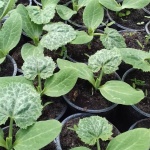
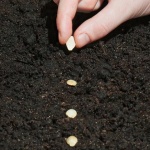
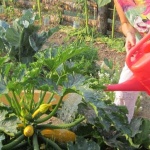
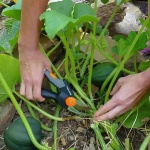
Soil requirements
El Salvador needs light sandy loam substrates. If the proportion of sand is too large, in the fall the soil is diluted with a small amount of clay. In addition, during the same period, compost or humus is added, as well as wood ash. As for the seedlings, they are grown in a substrate consisting of turf, peat and humus. Perlite is an additional additive to such a soil.
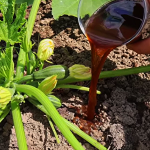
Disease and pest resistance
El Salvador is a hybrid, so his immunity is much higher than average. However, in inattentive gardeners, the culture can be affected by real or downy mildew, as well as anthracnose. Such diseases are treated with fungicidal compositions and copper-based products.
Melon aphid attacks will also be frequent. In dry summers, spider mites also start. There are many folk remedies to get rid of insects. Insecticides should be used last.
